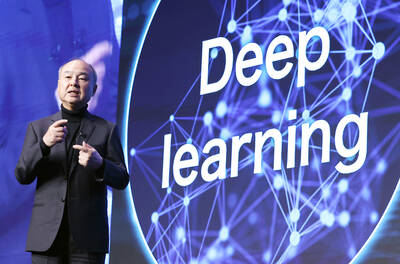Millions of South Africans suffer from debilitating hearing loss. Early screening is vital, but represents a challenge in a vast country where rural populations lack access to medical experts.
A new smartphone app is attempting to address these problems by detecting hearing loss and connecting patients with experts.
The hearScreen app, developed at the University of Pretoria in 2013, uses a smartphone and a pair of headphones to test for hearing loss. The results are captured and can be shared with hearing-loss experts.
The idea for the app was born when chief executive Nic Klopper served on a South African Department of Health committee implementing a policy aimed at screening 3.5 million children for hearing loss annually.
“Realizing that the prohibitive costs of current test equipment and technical expertise required meant that less than 5 percent of children were receiving these services made me look into exploring alternative solutions,” he said.
“Capitalizing on the rapid growth in smartphone technology and connectivity just made sense,” he said.
Klopper got in touch with Herman Myburgh at the University of Pretoria to develop hearScreen.
“It provides the first smartphone-based hearing test that allows acoustic calibration of test stimuli according to prescribed national and international standards,” Klopper said.
The intention has always been to provide a solution for decentralized community-based access to hearing healthcare. More than 80 percent of the app’s usage is in underserved and rural areas.
“Hearing screening is the first access point for the identification of hearing loss to initiate appropriate interventions that minimize and negate the negative impact of hearing loss,” Klopper said. “At present, hearing test equipment is prohibitively expensive and inaccessible to the vast majority of South Africans.”
The response has been positive in South Africa, where hearScreen has partnered a number of non-governmental organizations to ensure quick and efficient rollout.
The Topsy Foundation, which supports orphaned and vulnerable children in South Africa, plans to use the tool in its early childhood development program.
Klopper said the app was deliberately designed to enable a layperson with minimal training to use a test accurately.
“In fact, the iconography was planned so that even someone illiterate could facilitate an accurate test,” he said. “Automated test sequences and quality control measures like environmental noise monitoring ensure reliable testing with cloud-based data management and surveillance for tracking and referral purposes.”
It is not just in South Africa that hearScreen is making its presence felt.
More than 360 million people globally suffer from hearing loss. The app is now being used in 25 countries, and the company is working with the WHO and the US aid agency USAID.

IN THE AIR: While most companies said they were committed to North American operations, some added that production and costs would depend on the outcome of a US trade probe Leading local contract electronics makers Wistron Corp (緯創), Quanta Computer Inc (廣達), Inventec Corp (英業達) and Compal Electronics Inc (仁寶) are to maintain their North American expansion plans, despite Washington’s 20 percent tariff on Taiwanese goods. Wistron said it has long maintained a presence in the US, while distributing production across Taiwan, North America, Southeast Asia and Europe. The company is in talks with customers to align capacity with their site preferences, a company official told the Taipei Times by telephone on Friday. The company is still in talks with clients over who would bear the tariff costs, with the outcome pending further

A proposed 100 percent tariff on chip imports announced by US President Donald Trump could shift more of Taiwan’s semiconductor production overseas, a Taiwan Institute of Economic Research (TIER) researcher said yesterday. Trump’s tariff policy will accelerate the global semiconductor industry’s pace to establish roots in the US, leading to higher supply chain costs and ultimately raising prices of consumer electronics and creating uncertainty for future market demand, Arisa Liu (劉佩真) at the institute’s Taiwan Industry Economics Database said in a telephone interview. Trump’s move signals his intention to "restore the glory of the US semiconductor industry," Liu noted, saying that

STILL UNCLEAR: Several aspects of the policy still need to be clarified, such as whether the exemptions would expand to related products, PwC Taiwan warned The TAIEX surged yesterday, led by gains in Taiwan Semiconductor Manufacturing Co (TSMC, 台積電), after US President Donald Trump announced a sweeping 100 percent tariff on imported semiconductors — while exempting companies operating or building plants in the US, which includes TSMC. The benchmark index jumped 556.41 points, or 2.37 percent, to close at 24,003.77, breaching the 24,000-point level and hitting its highest close this year, Taiwan Stock Exchange (TWSE) data showed. TSMC rose NT$55, or 4.89 percent, to close at a record NT$1,180, as the company is already investing heavily in a multibillion-dollar plant in Arizona that led investors to assume

AI: Softbank’s stake increases in Nvidia and TSMC reflect Masayoshi Son’s effort to gain a foothold in key nodes of the AI value chain, from chip design to data infrastructure Softbank Group Corp is building up stakes in Nvidia Corp and Taiwan Semiconductor Manufacturing Co (TSMC, 台積電), the latest reflection of founder Masayoshi Son’s focus on the tools and hardware underpinning artificial intelligence (AI). The Japanese technology investor raised its stake in Nvidia to about US$3 billion by the end of March, up from US$1 billion in the prior quarter, regulatory filings showed. It bought about US$330 million worth of TSMC shares and US$170 million in Oracle Corp, they showed. Softbank’s signature Vision Fund has also monetized almost US$2 billion of public and private assets in the first half of this year,